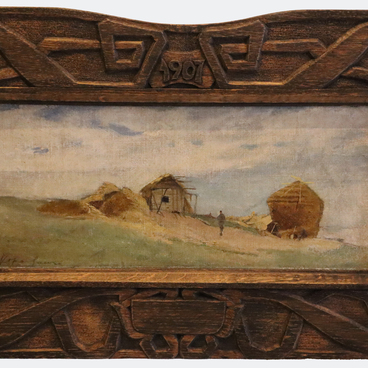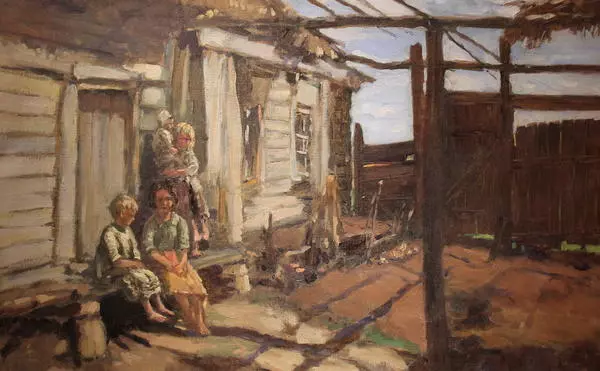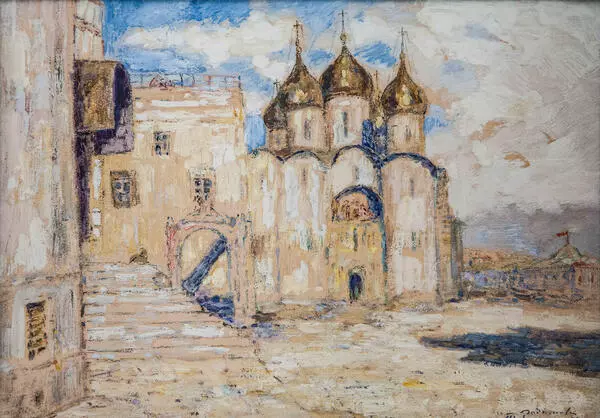The Soviet “peasant poet” and artist Pavel Alexandrovich Radimov was born in 1887 in Ryazan Governorate. He was brought up in the family of a hereditary priest and together with his two brothers got a theological education.
He gave up the ministry at the age of 18 and went to Moscow, where he took drawing lessons. Having failed to pass the exams at the Moscow School of Painting, Sculpture and Architecture, Radimov moved to Kazan in 1896. Soon he entered the faculty of philology.
In 1912, his first book of poems “Field Psalms” was published, which earned him a place among the “peasant poets” together with Sergei Alexandrovich Yesenin and Nikolai Alekseevich Klyuev. In 1914 he published his collection of poems “Popiada”.
At the same time, Pavel Alexandrovich created paintings. In 1911, he presented them at the exhibitions of the Society for Travelling Art Exhibitions, and in 1914 he became a member of this group for the painting “The Old Mezzanine”.
In 1918 he was elected head of the Society for Travelling Art Exhibitions.
In May 1918, together with the artist Grigory Antonovich Medvedev, he brought the Volga-Kama traveling exhibition from Kazan to Kozmodemyansk. It included 40 paintings by Kazan artists and works from private collections. Kozmodemyansk was the first and the last town to host the Volga-Kama traveling exhibition.
Because of the Russian Civil War, Pavel Radimov lived for more than a year in the village of Elasy near Kozmodemyansk. He organized Sunday art classes and taught drawing to children there. In 1919, on the initiative of local teachers and with the support of the public activist Alexander Vladimirovich Grigoriev, a local history museum with a fine arts department was opened. The paintings of the Volga-Kama exhibition laid the foundation of the collection.
In 1922, Pavel Radimov took part in establishing the Association of Artists of Revolutionary Russia. It was also at that time that he published the collection of poems “Village”, whereupon he was elected chairman of the All-Russian Union of Poets.
From 1920 to 1930 the artist completed a number of paintings for the Regional Museum of Local Lore in Krasnokokshaisk. They covered ethnographic and socialist construction themes in the Mari region.
From 1930 to 1940 the artist lived and worked in
the Moscow region, preferring to paint landscapes. In 1957 he opened the
People’s Exhibition in Abramtsevo with free admission. The last lifetime
exhibition of the artist was held in Moscow in 1962.






